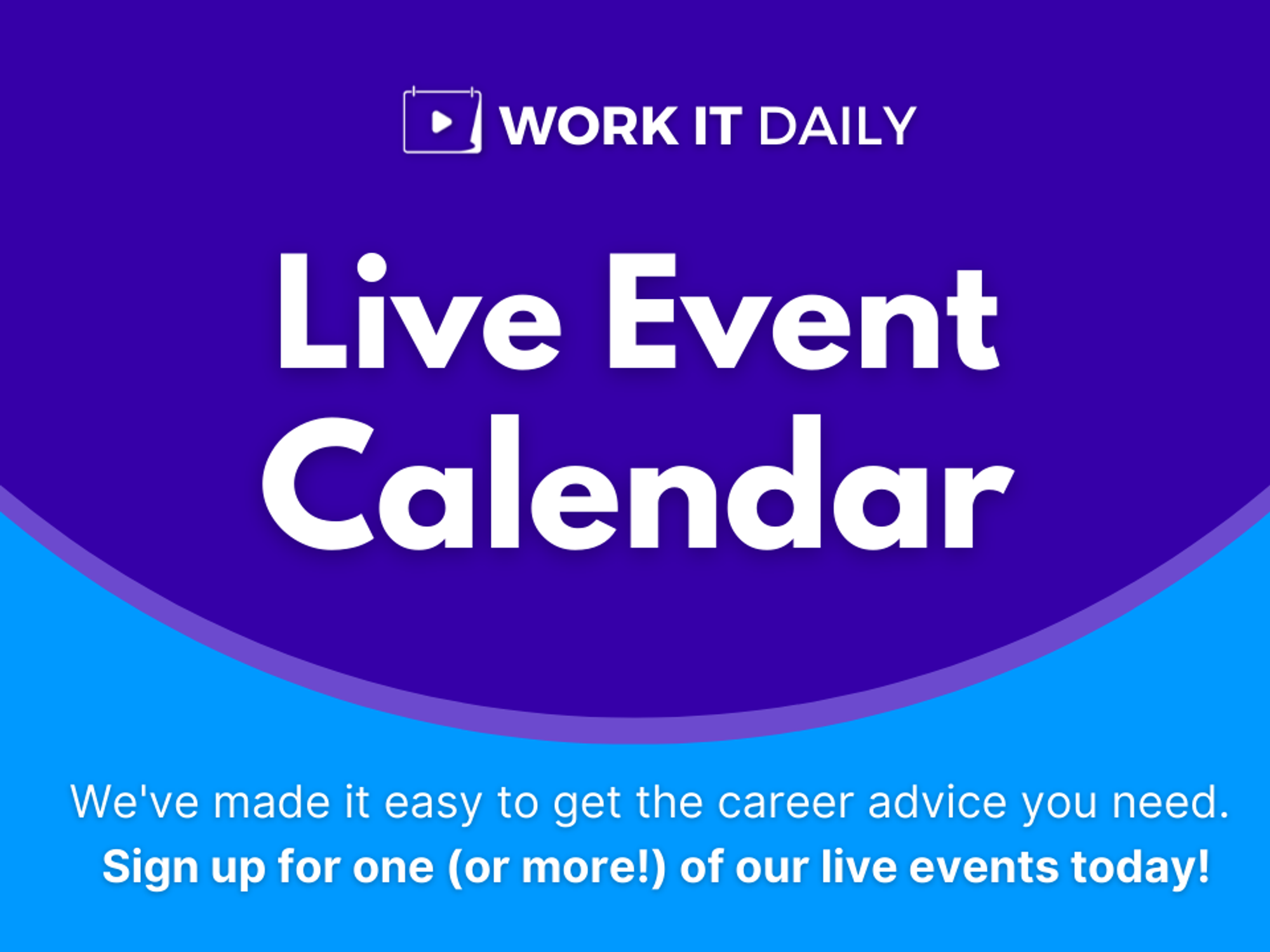
Quick Tip: Use 'Dear Hiring Team' On Your Cover Letter
 Bigstock
{"adCodes": [{"desktop": "\u003cdiv class=\u0027rblad-wit_content\u0027\u003e\u003c/div\u003e", "display": true, "mobile": "\u003cdiv class=\u0027rblad-wit_content\u0027\u003e\u003c/div\u003e", "new_amp": "\u003camp-ad width=336 height=280\n type=\"doubleclick\"\n data-slot=\"/22278042776,22664312254/wit/wit_content\"\n data-multi-size=\"300x250\"\u003e\n\u003c/amp-ad\u003e", "order": 0, "tablet": "\u003cdiv class=\u0027rblad-wit_content\u0027\u003e\u003c/div\u003e"}, {"desktop": "\u003cdiv class=\u0027rblad-wit_content\u0027\u003e\u003c/div\u003e", "display": true, "mobile": "\u003cdiv class=\u0027rblad-wit_content\u0027\u003e\u003c/div\u003e", "new_amp": "\u003camp-ad width=336 height=280\n type=\"doubleclick\"\n data-slot=\"/22278042776,22664312254/wit/wit_content\"\n data-multi-size=\"300x250\"\u003e\n\u003c/amp-ad\u003e", "order": 1, "tablet": "\u003cdiv class=\u0027rblad-wit_content\u0027\u003e\u003c/div\u003e"}, {"desktop": "\u003cdiv class=\u0027rblad-wit_content\u0027\u003e\u003c/div\u003e", "display": true, "mobile": "\u003cdiv class=\u0027rblad-wit_content\u0027\u003e\u003c/div\u003e", "new_amp": "\u003camp-ad width=336 height=280\n type=\"doubleclick\"\n data-slot=\"/22278042776,22664312254/wit/wit_content\"\n data-multi-size=\"300x250\"\u003e\n\u003c/amp-ad\u003e", "order": 2, "tablet": "\u003cdiv class=\u0027rblad-wit_content\u0027\u003e\u003c/div\u003e"}], "adsOrder": [2]}
Bigstock
{"adCodes": [{"desktop": "\u003cdiv class=\u0027rblad-wit_content\u0027\u003e\u003c/div\u003e", "display": true, "mobile": "\u003cdiv class=\u0027rblad-wit_content\u0027\u003e\u003c/div\u003e", "new_amp": "\u003camp-ad width=336 height=280\n type=\"doubleclick\"\n data-slot=\"/22278042776,22664312254/wit/wit_content\"\n data-multi-size=\"300x250\"\u003e\n\u003c/amp-ad\u003e", "order": 0, "tablet": "\u003cdiv class=\u0027rblad-wit_content\u0027\u003e\u003c/div\u003e"}, {"desktop": "\u003cdiv class=\u0027rblad-wit_content\u0027\u003e\u003c/div\u003e", "display": true, "mobile": "\u003cdiv class=\u0027rblad-wit_content\u0027\u003e\u003c/div\u003e", "new_amp": "\u003camp-ad width=336 height=280\n type=\"doubleclick\"\n data-slot=\"/22278042776,22664312254/wit/wit_content\"\n data-multi-size=\"300x250\"\u003e\n\u003c/amp-ad\u003e", "order": 1, "tablet": "\u003cdiv class=\u0027rblad-wit_content\u0027\u003e\u003c/div\u003e"}, {"desktop": "\u003cdiv class=\u0027rblad-wit_content\u0027\u003e\u003c/div\u003e", "display": true, "mobile": "\u003cdiv class=\u0027rblad-wit_content\u0027\u003e\u003c/div\u003e", "new_amp": "\u003camp-ad width=336 height=280\n type=\"doubleclick\"\n data-slot=\"/22278042776,22664312254/wit/wit_content\"\n data-multi-size=\"300x250\"\u003e\n\u003c/amp-ad\u003e", "order": 2, "tablet": "\u003cdiv class=\u0027rblad-wit_content\u0027\u003e\u003c/div\u003e"}], "adsOrder": [2]}
You’ve always been told that you shouldn’t write, “To Whom It May Concern,” on your cover letter. But what should you do when you don’t have the name of the hiring manager?
First, Track Down The Name
Obviously, it’s ideal to use the hiring manager’s name in your cover letter. So, the first thing you should do is try to track down the hiring manager’s name online (i.e. the company website, LinkedIn, Twitter, etc.).
You can also call up the company directly to ask for the name. Simply call up the company and say, “Hi, my name is ____ and I’m applying for a position at your company. Would it be possible for me to get the name of the hiring manager so I can address him or her in my cover letter?”
If All Fails, Use 'Dear Hiring Team'
Bigstock
If the hiring manager’s name is nowhere to be found and the company is unwilling to give you his or her name, you should use “Dear Hiring Team” in your cover letter salutation. By addressing your cover letter to the hiring team, you increase your chances of getting it in front of the right pair of eyes.
Why Can't You Use Someone Else's Name?
Bigstock
But what if you know the name of someone else (not involved with hiring) who works at the company? Can you just address it to them instead?
Absolutely not!
“That person may not be the person that’s hiring, and they could easily throw [your cover letter] in the trash,” says J.T. O’Donnell, founder and CEO of Work It Daily. “You don’t know if they’re going to forward it to the right person or not. You DO NOT want to risk that.”
Need more help?
Is every element of your career plan working together to help you get the results you want? Are you confident that the career plan you've developed will get you out of your career rut for good? If you're not getting the results you want out of your career, we can help.
We'd love it if you joined our FREE community. It’s a private, online platform where workers, just like you, are coming together to learn and grow into powerful Workplace Renegades. More importantly, we have tons of resources inside our community that can help you write a cover letter—the right way.
It's time to find work that makes you feel happy, satisfied, and fulfilled. Join our FREE community today to finally become an empowered business-of-one!
This article was originally published at an earlier date.
From Your Site Articles- 5 Crucial Cover Letter Mistakes To Avoid - Work It Daily ›
- 3 Ways Your Social Media Is Scaring Off Hiring Managers - Work It ... ›
- Why "To Whom It May Concern" Doesn't Belong On Cover Letters ... ›
- 5 Parts Of A Cover Letter (A.K.A. How To Write A Good One!) - Work ... ›
- Top 2 Common Cover Letter Mistakes To Avoid - Work It Daily ›
- FAQ: Should You Use "Dear Hiring Manager" on a Cover Letter ... ›
- How To Use “Dear Hiring Manager” On Your Cover Letter – Zippia ›
- Should You Use 'Dear Hiring Manager' On a Cover Letter ... ›


LinkedIn is not the easiest social media platform to navigate. If you wish you could make better use of this essential career tool, sign up for this event today!
What You'll Learn:
- The background and importance of LinkedIn
- How to get started with LinkedIn
- How to navigate the different areas of the platform
- Tips on how to get noticed on LinkedIn
Hosted by: J.T. O'Donnell & Christina Burgio
Cost of Event: $5.00/ticket
Buy your ticket for this live event today!
July 15, 2022: Networking Masters
Join us for Networking Masters (think Toastmasters but for networking)! During this interactive group session, you'll exercise your networking and presenting skills so you can be a more confident connector!
Hosted by: J.T. O'Donnell or Christina Burgio
Cost of Event: FREE
Sign up for this live event today!
July 19, 2022: CAREER AMA (Ask Me Anything)
Come get your career and job search questions answered by our team.
Hosted by: Christina Burgio
Cost of Event: FREE
Sign up for this live event today!
July 20, 2022: How To Get A Promotion (And A Raise)
It can be tough getting that promotion at work, especially when you're not sure how to show you deserve one. If you want to get a promotion (and a raise!), attend this live event and learn how to make the case for a higher job title and salary.
What You'll Learn:
- Indicate that you’re ready to take your career to the next level
- Tips on how to position yourself for a promotion or raise
- Demonstrate your unique value and advice on how to have this conversation with your manager
Hosted by: J.T. O'Donnell & Christina Burgio
Cost of Event: $5.00/ticket
Buy your ticket for this live event today!
July 22, 2022: Networking Masters
Join us for Networking Masters (think Toastmasters but for networking)! During this interactive group session, you'll exercise your networking and presenting skills so you can be a more confident connector!
Hosted by: J.T. O'Donnell or Christina Burgio
Cost of Event: FREE
Sign up for this live event today!
July 26, 2022: J.T. O’Donnell’s CAREER AMA (Ask Me Anything)
Come get your career and job search questions answered by our founder & CEO J.T. O'Donnell.
Hosted by: J.T. O'Donnell
Cost of Event: FREE
Sign up for this live event today!
July 27, 2022: How To Make A Career Change When You've Been Laid Off
Not sure if it's time to change careers, or how to make a career change when you ARE ready? Sign up for this live event to learn exactly how to make a career change when you've been laid off.
What You'll Learn:
- Determine if a career change is the right move for you
- Identify a career path that aligns with your passions
- Develop an effective job search strategy that serves you
Hosted by: J.T. O'Donnell & Christina Burgio
Cost of Event: $5.00/ticket
Buy your ticket for this live event today!
July 29, 2022: Networking Masters
Join us for Networking Masters (think Toastmasters but for networking)! During this interactive group session, you'll exercise your networking and presenting skills so you can be a more confident connector!
Hosted by: J.T. O'Donnell or Christina Burgio
Cost of Event: FREE
Sign up for this live event today!
Read moreShow lesscareer events {"customDimensions": {"1":"Jenna Arcand","2":"partner-boost","3":"answering interview questions, behavioral interview questions, career, career advice, career ama, career events, career help, career tips, college graduation, college graduation quotes, common interview questions, cover letter, cover letter examples, cover letter for internship, cover letter for job, cover letter sample, cover letter template, cover letter template free, executive job search, executives, follow up email after interview, free career events, free cover letter examples, free events, free live events, free resume templates, good cover letter examples, google docs resume template, high school graduate, how to, how to answer interview questions correctly, how to get job interviews, how to get recruiters to contact you, how to get recruiters to talk to you, how to make a cover letter, how to make a resume, how to write a cover letter, how to write a resume, indeed resume, interview, interview questions, interview thank you email, interview tips, j.t. o'donnell, job events, job interview, job interview tips, job search, job search advice, job search help, job search tips, jobs for, jobs for college graduates, jobs for recent college graduates, jt o'donnell, live career events, live events, my perfect resume, networking, networking masters, objective for resume, questiosn to ask in an interview, resume, resume cover letter, resume cover letter examples, resume examples, resume format, resume maker, resume template, sample cover letter for resume, skills for resume, skills to put on a resume, thank you email after interview, virtual career events, what is, what is a cover letter, how to navigate linkedin, how to navigate linkedin effectively, how to get a promotion, how to get a raise, career change, changing careers, how to determine a career change, ~rmsc:rebelmouse-image:29917530, ~rmsc:rebelmouse-image:30008453, ~rmsc:rebelmouse-image:30022806, ~rmsc:rebelmouse-image:30022814, ~rmsc:rebelmouse-image:30012653, ~rmsc:rebelmouse-image:30022831, ~rmsc:rebelmouse-image:30022859, ~rmsc:rebelmouse-image:30040716, ~rmsc:rebelmouse-image:30022873","4":"07/12/2022"}, "post": {"split_testing": {}, "providerId": 0, "sections": [0, 562457120, 370480899, 376550212, 376490053, 376536198, 376491143, 376489962, 540895067, 376489574, 404327439, 474863171, 376514019, 376490081, 540895063, 376489624, 473333499, 479660731, 473310813, 543270555], "buckets": [], "authors": [19836096]} } iStock
iStock I am pleased to announce that after much hard work and complex analyses, my fellow authors and I have successfully proven through a quantitative research study (Journal of Applied Marketing Analytics) a new measure that quantifies your organization's marketing analytics orientation (MAO).
It identifies the factors that help your organization become more analytically focused on improving marketing performance. Practitioners can use the survey to understand issues and opportunities to optimize how people, processes, and technology are deployed. This study will help you improve decision-making in your organization.
I congratulate my fellow authors Mark Weber, a marketing research leader in financial services, and Ed Lucio, the lead data scientist from ASB Bank in New Zealand.
Why is this important, you ask?
When publishing research, it is essential to match your study to a journal with the right audience and research agenda, which is what we've done here. We decided to publish in a more practitioner-focused journal that balances theory and practice so the study could be more beneficial for marketers.
[If you are a data analytics, AI, information security, data privacy, or digital expert, I highly recommend you check out Henry Stewart Publications' journals. They offer the best blend of real-world research applications and emerging research topics I have yet found.]
For those familiar with quantitative research, you may be interested in the following:
When researching any new construct or phenomenon, it is not enough to only publish an exploratory study; you must quantitatively prove through statistical analyses and modeling that the findings are valid. This includes a measurement model and a structural model, and various other statistical tests. The results are then further validated by peers. See the links below to the qualitative and quantitative peer-reviewed journal articles.
- Qualitative Study on Marketing Analytics (Published by Journal of Marketing Analytics: 2018)
- Quantitative Study on Marketing Analytics (Published by Journal of Applied Marketing Analytics in Volume 8 to be released shortly)
Let me know your thoughts and how MAO can be used to assess your marketing analytics organization.
Read moreShow lessmarketing analytics orientation {"customDimensions": {"1":"Executive Community, Anthony Branda","2":"live","3":"marketing analytics orientation, data analytics, marketing function, quantitative research, data science, data scientists, ~rmsc:rebelmouse-image:30093050","4":"07/12/2022"}, "post": {"split_testing": {}, "providerId": 0, "sections": [0, 479660731, 544324100, 544398568, 544398580, 544398581, 544398583, 473333499], "buckets": [], "authors": [21030904, 25270454]} } Blog Pulling The Tiger’s Teeth: How To Deal With Angry Customers Liam AndersonJuly 11, 2022 Bigstock
{"adCodes": [{"desktop": "\u003cdiv class=\u0027rblad-wit_content\u0027\u003e\u003c/div\u003e", "display": true, "mobile": "\u003cdiv class=\u0027rblad-wit_content\u0027\u003e\u003c/div\u003e", "new_amp": "\u003camp-ad width=336 height=280\n type=\"doubleclick\"\n data-slot=\"/22278042776,22664312254/wit/wit_content\"\n data-multi-size=\"300x250\"\u003e\n\u003c/amp-ad\u003e", "order": 0, "tablet": "\u003cdiv class=\u0027rblad-wit_content\u0027\u003e\u003c/div\u003e"}, {"desktop": "\u003cdiv class=\u0027rblad-wit_content\u0027\u003e\u003c/div\u003e", "display": true, "mobile": "\u003cdiv class=\u0027rblad-wit_content\u0027\u003e\u003c/div\u003e", "new_amp": "\u003camp-ad width=336 height=280\n type=\"doubleclick\"\n data-slot=\"/22278042776,22664312254/wit/wit_content\"\n data-multi-size=\"300x250\"\u003e\n\u003c/amp-ad\u003e", "order": 1, "tablet": "\u003cdiv class=\u0027rblad-wit_content\u0027\u003e\u003c/div\u003e"}, {"desktop": "\u003cdiv class=\u0027rblad-wit_content\u0027\u003e\u003c/div\u003e", "display": true, "mobile": "\u003cdiv class=\u0027rblad-wit_content\u0027\u003e\u003c/div\u003e", "new_amp": "\u003camp-ad width=336 height=280\n type=\"doubleclick\"\n data-slot=\"/22278042776,22664312254/wit/wit_content\"\n data-multi-size=\"300x250\"\u003e\n\u003c/amp-ad\u003e", "order": 2, "tablet": "\u003cdiv class=\u0027rblad-wit_content\u0027\u003e\u003c/div\u003e"}], "adsOrder": [2]}
Bigstock
{"adCodes": [{"desktop": "\u003cdiv class=\u0027rblad-wit_content\u0027\u003e\u003c/div\u003e", "display": true, "mobile": "\u003cdiv class=\u0027rblad-wit_content\u0027\u003e\u003c/div\u003e", "new_amp": "\u003camp-ad width=336 height=280\n type=\"doubleclick\"\n data-slot=\"/22278042776,22664312254/wit/wit_content\"\n data-multi-size=\"300x250\"\u003e\n\u003c/amp-ad\u003e", "order": 0, "tablet": "\u003cdiv class=\u0027rblad-wit_content\u0027\u003e\u003c/div\u003e"}, {"desktop": "\u003cdiv class=\u0027rblad-wit_content\u0027\u003e\u003c/div\u003e", "display": true, "mobile": "\u003cdiv class=\u0027rblad-wit_content\u0027\u003e\u003c/div\u003e", "new_amp": "\u003camp-ad width=336 height=280\n type=\"doubleclick\"\n data-slot=\"/22278042776,22664312254/wit/wit_content\"\n data-multi-size=\"300x250\"\u003e\n\u003c/amp-ad\u003e", "order": 1, "tablet": "\u003cdiv class=\u0027rblad-wit_content\u0027\u003e\u003c/div\u003e"}, {"desktop": "\u003cdiv class=\u0027rblad-wit_content\u0027\u003e\u003c/div\u003e", "display": true, "mobile": "\u003cdiv class=\u0027rblad-wit_content\u0027\u003e\u003c/div\u003e", "new_amp": "\u003camp-ad width=336 height=280\n type=\"doubleclick\"\n data-slot=\"/22278042776,22664312254/wit/wit_content\"\n data-multi-size=\"300x250\"\u003e\n\u003c/amp-ad\u003e", "order": 2, "tablet": "\u003cdiv class=\u0027rblad-wit_content\u0027\u003e\u003c/div\u003e"}], "adsOrder": [2]}
Millions of people work in customer service. Customer service roles vary from contact center agents handling enquiries about a 10-dollar bus service to account directors managing billion-dollar clients.
Sooner or later, they all have to deal with angry customers.
I am one of these customer service professionals. Here are a few tricks I’ve learned over the years.
Mindset
Bigstock
Customers can get angry, abusive, or even violent.
Even the angriest customer is unlikely to be angry at you, specifically, if you have the right mindset.
Firstly, check your own emotions and how they affect your behavior.
If a customer starts acting aggressively, check your own pulse rate and heart rate. Is the blood rushing to your head? This is when you have to be still. Responding to anger with anger makes a bad situation worse.
This doesn’t mean you have no right to be angry. If someone behaves aggressively, millions of years of evolution have built the “fight or flight” program into our brains. In this situation, reacting aggressively or running away will not help.
Instead, try and put yourself in the customer’s shoes. The customer wants to go home at the end of the day. He finds out his bus has been cancelled. The next one is in three hours. Or your corporate client’s IT director has spent half a million dollars on a new computer. It doesn’t work. If it can’t be fixed, his job is on the line. How would you feel?
The Customer Is Always “Emotionally Right”
Bigstock
As Mr. Brian Shore, CEO of ZOOM International says: “The customer may not always be right, but the customer is always emotionally right.”
Emotion is the key. Emotion drives angry customers’ behavior. Logic will not prevail until the emotion has been handled.
Many try to ignore emotional behavior. It’s better to openly acknowledge and validate the customer’s emotion. Try this response: “I can see you’re feeling very frustrated/angry about this. If I were in your position, I’d feel the same way too.”
Show the customer that you have recognized and respect his feelings, and understand the urgency of the situation.
If the customer is still expressing anger, stay silent and let him continue. If you are in a public area, lead him politely somewhere out of public view so that he can “vent” there.
The customer is less likely to feel angry with you specifically. Once he sees you are “on his side,” he may be ready to have a rational conversation.
The worst thing is to tell an angry customer to “calm down.” This implies that the customer has no right to feel angry at all. Customers don’t usually react positively to that. It’s better to tell the customer that you can see that he is angry, and you want to help him. Then, ask him politely if you can ask these questions to fully understand the situation.
Take Control Of The Conversation
Bigstock
Asking questions allows you to take more control of the situation. Once the customer is answering your questions, use the customer’s name and the “question/answer/comment” rapport-building techniques. (See “further reading” below.)
If you have a lot of questions, let him know to manage his expectations. (“This may take some time—may I ask you some questions?”) If the questions relate to technical details, such as website addresses, credentials, part numbers, etc., you might want to give him a list of questions and some time to find the answers.
Positive Language
Bigstock
Angry customers do not respond well to being told something can’t be done. Negative language, offering no solutions, and implying that the customer is to blame does not help the situation, even if it is true.
If what they say they want is not possible, ask more questions to find out what they really want. (Your flight to Manchester is cancelled. When do you need to get there?) There might be an alternative that more or less gives them what they want.
Sometimes “no” really does mean “no.” In that case, try to soften the blow, but make sure he understands it really is not possible. Try saying this: “I appreciate that this situation is very frustrating for you. I’m afraid we can’t help you right now. I’m sorry.”
A couple of very important points.
Never use the word “but” after “I’m sorry” or “I appreciate you are feeling frustrated.” The word “but” sends the message “Disregard all the nice things I said before.”
When you use the word “sorry” or apologize, do not say specifically what you are apologizing for. That may be taken as an admission of liability and used in court. Likewise, if you cannot give a clear and company-authorized reason why something is not possible, it’s better not to explain.
Clear Outcomes & Managing Expectations
Bigstock
It’s very important to give the customer a clear outcome. If you can solve his problem, the outcome is clear. If not, the outcome is also clear.
If you need more information, or something else has to happen, then make it very clear to the customer what will happen next, who needs to take the next action, and tell him when this is going to happen.
You need to let the customer know what happens next as clearly and accurately as possible. If the news is bad, telling the customer everything will be fine won’t help him, your employer, or you.
To manage your expectations, everything I have written above won’t work every time! There are some problems that cannot be solved, and there are some customers that cannot be helped.
How was it for you?
I love hearing about other people’s experiences! Let me know your “hacks” for dealing with angry customers!
Further reading...
You can read more about rapport building here: Don’t Be A Wallflower! A Beginner’s Guide To Building Rapport
You can read more about positive language here: Positive Language For No-Nonsense Managers
 Is Your Marketing Function Analytically Oriented For Impact?
{"customDimensions": {"1":"Executive Community, Anthony Branda","2":"live","3":"marketing analytics orientation, data analytics, marketing function, quantitative research, data science, data scientists, ~rmsc:rebelmouse-image:30093050","4":"07/12/2022"}, "post": {"split_testing": {}, "providerId": 0, "sections": [0, 479660731, 544324100, 544398568, 544398580, 544398581, 544398583, 473333499], "buckets": [], "authors": [21030904, 25270454]} }
Is Your Marketing Function Analytically Oriented For Impact?
{"customDimensions": {"1":"Executive Community, Anthony Branda","2":"live","3":"marketing analytics orientation, data analytics, marketing function, quantitative research, data science, data scientists, ~rmsc:rebelmouse-image:30093050","4":"07/12/2022"}, "post": {"split_testing": {}, "providerId": 0, "sections": [0, 479660731, 544324100, 544398568, 544398580, 544398581, 544398583, 473333499], "buckets": [], "authors": [21030904, 25270454]} }
 Now Hiring: Remote SysOps Engineer
{"customDimensions": {"1":"Work It Daily, Kinsta \u00ae","2":"popular","3":"kinsta, hiring, remote jobs, remote work, remote workforce, remote companies hiring, remote companies 2021, sysops engineer, sysops engineer jobs, ~popular_source-pageview, ~rmsc:rebelmouse-image:26404410, ~rmsc:rebelmouse-image:26409812","4":"05/18/2021"}, "post": {"split_testing": {}, "providerId": 0, "sections": [370480899, 545998439, 545998440, 473310812, 376489962, 526353713, 545658354, 548352055, 548352058, 543270555, 473333499, 473310813], "buckets": [], "authors": [19548593, 21891195]} }
Now Hiring: Remote SysOps Engineer
{"customDimensions": {"1":"Work It Daily, Kinsta \u00ae","2":"popular","3":"kinsta, hiring, remote jobs, remote work, remote workforce, remote companies hiring, remote companies 2021, sysops engineer, sysops engineer jobs, ~popular_source-pageview, ~rmsc:rebelmouse-image:26404410, ~rmsc:rebelmouse-image:26409812","4":"05/18/2021"}, "post": {"split_testing": {}, "providerId": 0, "sections": [370480899, 545998439, 545998440, 473310812, 376489962, 526353713, 545658354, 548352055, 548352058, 543270555, 473333499, 473310813], "buckets": [], "authors": [19548593, 21891195]} }
 3 Important Career Lessons Learned On And Off The Field
{"customDimensions": {"1":"Executive Community, J.T. O'Donnell","2":"popular","3":"career change, entrepreneur, entrepreneurship, career, career challenges, overcoming career challenges, personal branding, personal development, professional development, professional growth, success, career success, pro athletes, tom brady, chris gronkowski, nfl, tiktok, social media strategy, social media, career growth, ~rmsc:rebelmouse-image:25632872, ~rmsc:rebelmouse-image:25633076, ~rmsc:rebelmouse-image:25632876, ~rmsc:rebelmouse-image:25632899","4":"02/10/2021"}, "post": {"split_testing": {}, "providerId": 0, "sections": [0, 370480899, 473333499, 376489962, 526353713, 376489624, 479660731], "buckets": [], "authors": [21030904, 19549412]} }
3 Important Career Lessons Learned On And Off The Field
{"customDimensions": {"1":"Executive Community, J.T. O'Donnell","2":"popular","3":"career change, entrepreneur, entrepreneurship, career, career challenges, overcoming career challenges, personal branding, personal development, professional development, professional growth, success, career success, pro athletes, tom brady, chris gronkowski, nfl, tiktok, social media strategy, social media, career growth, ~rmsc:rebelmouse-image:25632872, ~rmsc:rebelmouse-image:25633076, ~rmsc:rebelmouse-image:25632876, ~rmsc:rebelmouse-image:25632899","4":"02/10/2021"}, "post": {"split_testing": {}, "providerId": 0, "sections": [0, 370480899, 473333499, 376489962, 526353713, 376489624, 479660731], "buckets": [], "authors": [21030904, 19549412]} }
 How Ex-NFL Player, Chris Gronkowski, Is Using Social Media To Change Careers
{"customDimensions": {"1":"Executive Community, J.T. O'Donnell","2":"popular","3":"2010, Barstool, camera phone, career growth and development, career growth opportunities, chrisgronkowski, cowboys, dallascowboys, dinner, football, free, gronkspike, iceshaker, investor, nfl, nflfootball, nflplayer, nflplayers, nflworkout, payday, rookie, salary, sharing, sharktank, tic toc, tic tok, tick tock, ticktock, tictok, tik tok, tiktok, tiktok.com, trade, trainingcamp, upload, video, video phone, weighin, youtube.com, ~popular_source-pageview, \u0442\u0438\u043a \u0442\u043e\u043a, \u30c6\u30a3\u30c3\u30af\u30c8\u30c3\u30af, chris gronkowski, ~rmsc:rebelmouse-image:25551501, ~rmsc:rebelmouse-image:25551637, ~rmsc:rebelmouse-image:25551540, ~rmsc:rebelmouse-image:25598481","4":"01/29/2021"}, "post": {"split_testing": {}, "providerId": 0, "sections": [0, 370480899, 473333499, 526353713, 376489624, 479660731], "buckets": [], "authors": [21030904, 19549412]} }
How Ex-NFL Player, Chris Gronkowski, Is Using Social Media To Change Careers
{"customDimensions": {"1":"Executive Community, J.T. O'Donnell","2":"popular","3":"2010, Barstool, camera phone, career growth and development, career growth opportunities, chrisgronkowski, cowboys, dallascowboys, dinner, football, free, gronkspike, iceshaker, investor, nfl, nflfootball, nflplayer, nflplayers, nflworkout, payday, rookie, salary, sharing, sharktank, tic toc, tic tok, tick tock, ticktock, tictok, tik tok, tiktok, tiktok.com, trade, trainingcamp, upload, video, video phone, weighin, youtube.com, ~popular_source-pageview, \u0442\u0438\u043a \u0442\u043e\u043a, \u30c6\u30a3\u30c3\u30af\u30c8\u30c3\u30af, chris gronkowski, ~rmsc:rebelmouse-image:25551501, ~rmsc:rebelmouse-image:25551637, ~rmsc:rebelmouse-image:25551540, ~rmsc:rebelmouse-image:25598481","4":"01/29/2021"}, "post": {"split_testing": {}, "providerId": 0, "sections": [0, 370480899, 473333499, 526353713, 376489624, 479660731], "buckets": [], "authors": [21030904, 19549412]} }
AP by OMG
Asian-Promotions.com |
Buy More, Pay Less | Anywhere in Asia
Shop Smarter on AP Today | FREE Product Samples, Latest
Discounts, Deals, Coupon Codes & Promotions | Direct Brand Updates every
second | Every Shopper’s Dream!
Asian-Promotions.com or AP lets you buy more and pay less anywhere in Asia. Shop Smarter on AP Today. Sign-up for FREE Product Samples, Latest Discounts, Deals, Coupon Codes & Promotions. With Direct Brand Updates every second, AP is Every Shopper’s Dream come true! Stretch your dollar now with AP. Start saving today!
Originally posted on: https://www.workitdaily.com/dear-hiring-team-cover-letter